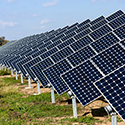U.S. Wants More Oil From Canada but Not a New Pipeline to Bring It
White House still opposes Keystone, but other options could include shipping more oilby rail or expanding pipeline capacity along existing routes
By Timothy Puko in Washington and Vipal Monga
Biden administration officials are seeking ways to boost oil imports from Canada, people familiar with the situation say, but with one big caveat—they don’t want to resurrect the Keystone XL pipeline thatPresident Biden effectively killed on his first day in office.
The people said deliberations are in early stages and that no clear-cut solutions have emerged.
Canada could export some more oil via rail, according to analysts and others familiar with the situation, and it could also pump more oil by increasing pressure on existing lines or by installing larger pipelines along permitted routes.
Those options, however, offer limited potential because rail transport is expensive and existing pipelines are at or near capacity.
Longer term, Canadian officials and oil-industry analysts say expanding the existing Keystone pipelinenetwork would offer a bigger, more efficient solution. The XL expansion was to carry 830,000 barrels aday of Canadian crude from Alberta to Nebraska, where the pipeline would meet up with the existingKeystone pipeline, and then on to refineries on the U.S. Gulf Coast.
Canada has ample reserves under its soil to meet U.S. demand, said Kevin Birn, an analyst with S&PGlobal Commodity Insights. It just doesn’t have enough pipeline capacity to pump it here, he said.
“There’s not a limitation in terms of resource potential,” Mr. Birn said. “There’s a limitation ofcapacity.”
With gasoline prices at near-record levels, President Biden last week ordered 180 million barrels of crude oil
to be taken from the nation’s emergency reserves to increase supplies.
At the same time, White House officials say Mr. Biden has no interest in reviving the Keystone XLpipeline project. They say that it couldn’t be completed in time to address today’s shortfall and that the president is still committed to reducing greenhouse gas emissions from fossil fuels over the long term.
“While the U.S. continues to engage with a variety of producing countries to address the current supplyimbalance we are seeing, the Keystone XL pipeline would have done little to nothing in addressing thatsupply,” a White House spokesman said.
That leaves limited options for bringing more Canadian crude to the U.S.
Enbridge Inc.’s Mainline system, for example, carries 2.85 million barrels of Canadian crude oil dailyfrom Alberta to the Midwest, making it Canada’s largest network of pipelines. Company officials say itis running at full capacity.
Canada’s federal government is building an expansion for its Trans Mountain pipeline from Alberta,which will enable an extra 590,000 barrels a day to reach Canada’s West Coast, and from there by shipto refineries in the U.S. and Asia. That expansion won’t be completed until the end of 2023, however.
Canadian oil producers could also send another 200,000 barrels a day of crude by rail. That amount isa fraction of the average 4.3 million barrels a day the country exported to the U.S. last year, according to the U.S. Energy Information Administration. Transport by rail is also expensive, which would squeeze Canadian producers’ profits.
Jason Kenney, premier of the Canadian province of Alberta, where most of Canada’s oil lies, is pushing for reviving the Keystone plans. He has criticized the Biden administration for looking to repressive regimes such as Venezuela
and Saudi Arabia for oil when Canada can provide additional capacity.
“We’re pleased to hear that there are discussions around enhancing North American energy security,”said Mr. Kenney’s spokesman, Justin Brattinga. “Instead of going cap in hand to the Saudis, Iranian sand Venezuelans to replace Russian energy, instead of replacing dictator oil with dictator oil, come to your liberal democratic friends and allies in Canada.”
Alberta has also been reaching out to U.S. lawmakers in states and in Congress.
Mr. Kenney spoke with Sen. Joe Manchin (D., W.Va.) last month to discuss continental energy security, said Sonya Savage, Alberta’s energy minister. Mr. Manchin asked Mr. Biden last year to reconsider his decision to scrap the Keystone XL project.
Mr. Manchin, who chairs the Senate Committee on Energy and Natural Resources, might soon visit theAlberta oil sands, said Ms. Savage.
Mr. Manchin’s office declined to comment.
Sen. Bill Cassidy (R., La.), a vocal advocate for the Keystone XL project and Gulf Coast refiners, said the White House has ruled out the pipeline because it doesn’t want to anger Mr. Biden’s political supporters.
“The president’s rhetoric does not match his actions,” he said. “The Biden administration refuses to take steps that would lower gas prices and address the struggles facing American families, because they are afraid of backlash from their base.”
In response, the White House said that implementing Mr. Biden’s plans to promote use of electric vehicles would save Americans more than $900 a year in gasoline costs, and that his plans to use clean energy to power utilities would tack on an additional $500 a year in savings to consumers and “create millions of good-paying union jobs.”
Mr. Biden took on Keystone XL as a signature issue under heavy pressure from environmentalistsupporters. They had made it a symbol of their effort to limit global warming by reducing oil consumption.
Pipeline developer TC Energy Corp., which had hoped to complete the pipeline in 2023,
abandoned plans a few months later.
When Mr. Biden took office, international crude prices were less than $60 a barrel and regular gasoline prices averaged less than $2.40 a gallon in the U.S.
Since then, oil has nearly doubled, with the international benchmark settling Monday up 3% to $107.53a barrel. Pump prices have soared to record highs, with regular unleaded averaging a nominal record of$4.22 a gallon in March, according to the EIA, helping drive inflation to a 40-year high.
As gas prices have risen, the White House has softened its stance on fossil fuels. U.S. Energy Secretary Jennifer Granholm met with Canada Natural Resources Minister Jonathan Wilkinson at an industry conference in Houston last month.
They discussed global-energy security in the wake of the Ukraine conflict and their initiatives to address climate change, said a spokesman for Mr. Wilkinson.
Canada has drawn interest from many countries looking to replace Russian energy, food and mineralexports. It has the fourth-largest oil reserves in the world.
Last month Mr. Wilkinson said Canadian oil and natural gas producers could raise production by300,000 barrels a day, adding to supplies that have hit record levels in recent months.
Ms. Savage, Alberta’s energy minister, said that Canada could produce even more, but only if her country’s federal government changed policies that have emphasized greenhouse-gas reductions and reducing reliance on fossil fuels.
The Canadian industry’s ability and willingness to invest the money needed to produce and move more oil depends on how much assurance it can get that policy makers will support the projects, said Tim McMillan, chief executive of the Canadian Association of Petroleum Producers, an energy industry group.
Despite the recent talk, the evidence so far hasn’t been in favor of more investment, he said.
“So far, the clearest signal from the U.S. is that they canceled Keystone,” he said.




